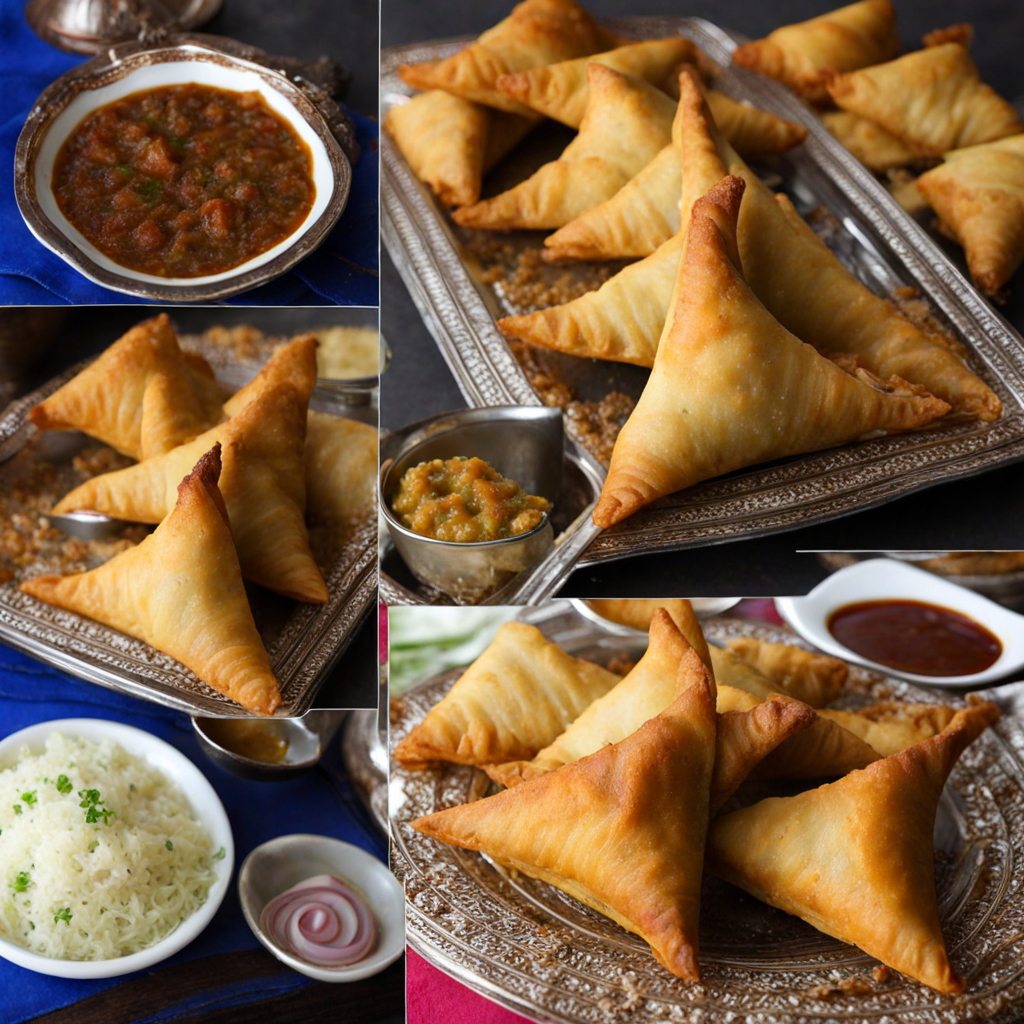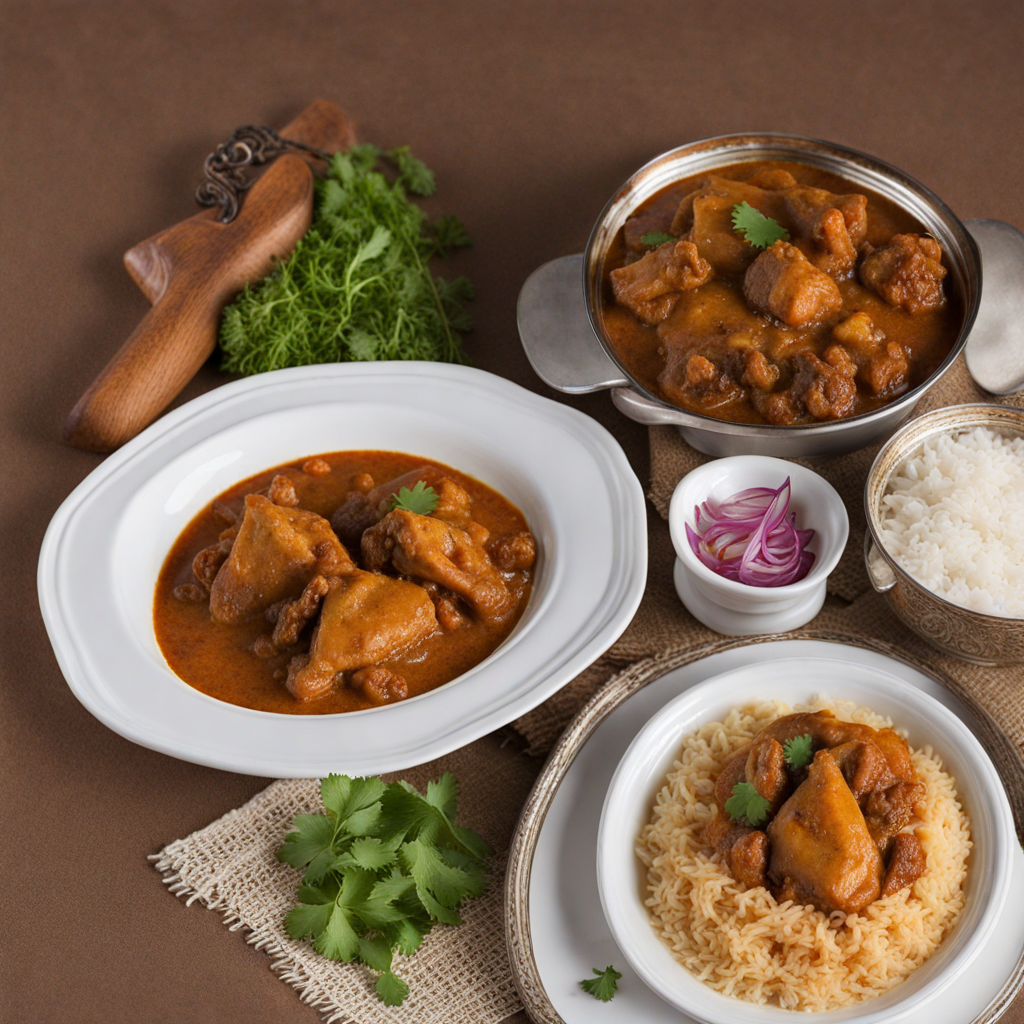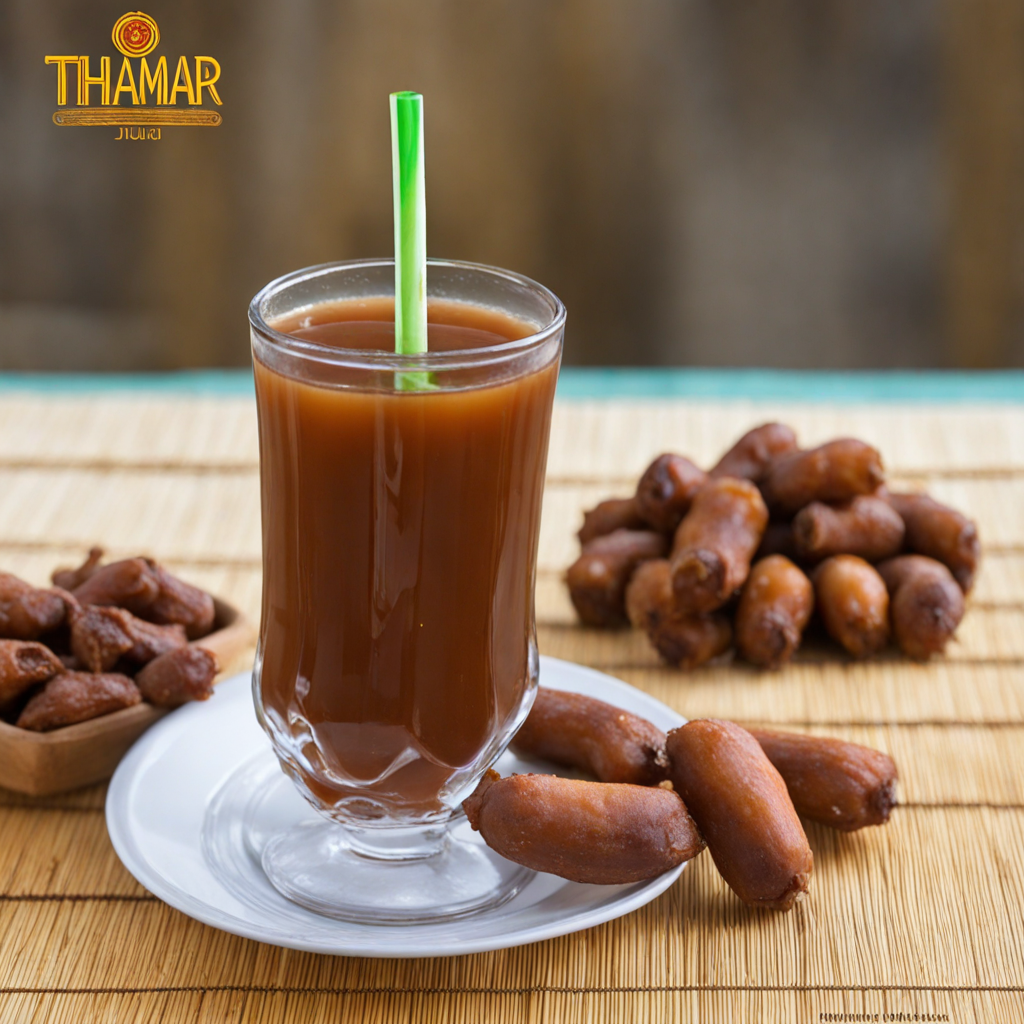Samboosa
Samboosa, a beloved snack from Djibouti, showcases a delightful fusion of flavors and textures that will entice any food enthusiast. These savory pastries are typically filled with a mixture of spiced meat, such as beef or lamb, along with aromatic herbs and vegetables. The filling is often seasoned with a blend of traditional spices like cumin, coriander, and sometimes a hint of chili, offering a warm and robust flavor profile that is both comforting and exciting. The outer layer is made from thin dough, which is folded into a triangular shape and then deep-fried to achieve a golden, crispy crust that provides a satisfying crunch with each bite. One of the unique aspects of samboosa is its versatility. While the classic meat filling is widely enjoyed, there are numerous variations that cater to different palates. Vegetarian options filled with spiced potatoes, lentils, or even cheese are just as popular, making samboosa an excellent choice for diverse dietary preferences. These delectable treats are often served with a side of tangy dipping sauce, enhancing the overall experience with a burst of acidity that cuts through the richness of the pastry. In Djibouti, samboosa is more than just a snack; it’s a cultural staple often enjoyed during celebrations and gatherings. The process of making samboosa can be a communal activity, where families come together to prepare and share these delicious bites. Whether enjoyed as a street food delicacy or a home-cooked delight, samboosa encapsulates the essence of Djiboutian cuisine, inviting you to explore its rich culinary heritage and indulge in flavors that are both familiar and exotic.
How It Became This Dish
The History of سمبوسة (Sambusa) in Djibouti: A Culinary Journey Sambusa, often referred to as samosa in other cultures, is a beloved pastry that holds a significant place in the culinary landscape of Djibouti and the broader Horn of Africa region. These delightful pockets of flavor, typically filled with spiced ingredients and fried to crispy perfection, have a rich history that weaves together trade, cultural exchange, and the evolution of local cuisines. Origins of Sambusa The origins of sambusa are believed to date back to ancient times, with roots tracing back to the Indian subcontinent. Historical accounts suggest that the dish may have been introduced to the Middle East and North Africa through Persian influence around the 10th century. The word 'sambusa' is derived from the Arabic term 'sambūsaj,' which itself has connections to the Persian word 'sambusak.' As trade routes flourished, the sambusa made its way south along the Red Sea and the Gulf of Aden, reaching the shores of the Horn of Africa, including Djibouti. The port city of Djibouti, due to its strategic location, became a melting pot of cultures, where Arab, Somali, and French influences converged. This cultural amalgamation played a crucial role in the sambusa’s evolution, as local ingredients and culinary techniques were integrated into the dish. Cultural Significance In Djibouti, sambusa has transcended its role as merely a food item; it has become a symbol of hospitality and community. Traditionally, sambusas are prepared for special occasions, such as Ramadan, weddings, and family gatherings. During Ramadan, the savory pastries are often served as part of the iftar meal that breaks the fast. The act of sharing sambusas during such gatherings fosters a sense of togetherness and cultural identity. The sambusa is not only a delicious treat but also a canvas for storytelling. Each family may have its own recipe, passed down through generations, with unique fillings and preparation methods that reflect their heritage. Common fillings include spiced minced meat (often beef or lamb), lentils, or vegetables mixed with aromatic herbs and spices. This variation is a testament to the adaptability of sambusa, allowing it to cater to diverse palates and dietary preferences. Development Over Time As Djibouti's history unfolded, so too did the sambusa. In the late 19th and early 20th centuries, the region experienced significant political and social changes, including colonization by France. This period introduced new ingredients and culinary influences, further diversifying the sambusa. French techniques and flavors merged with traditional Somali cooking, creating a unique fusion that would influence how sambusas were prepared and enjoyed. In contemporary Djibouti, sambusas have become a staple street food, found in bustling markets and at roadside stalls. Vendors often showcase their sambusas in vibrant displays, enticing passersby with the aroma of spices and frying oil. The rise of food culture and globalization has also played a role in the sambusa's popularity. As Djibouti's diaspora spreads across the globe, they carry with them the cherished tradition of sambusa-making, introducing it to new audiences and ensuring its place in the global culinary scene. The sambusa has also adapted to modern tastes and trends. In recent years, variations such as vegetarian sambusas, filled with spiced potatoes or chickpeas, have gained popularity, catering to a growing awareness of plant-based diets. Additionally, the sambusa has found its way into international cuisine, with chefs incorporating it into fusion dishes, blending elements from different culinary traditions. The Art of Making Sambusa The preparation of sambusa is an art form in itself. Traditionally, the dough is made from wheat flour, water, and a pinch of salt, rolled out into thin circles. The filling is carefully prepared, seasoned with a blend of spices, and placed in the center of the dough. The edges are then meticulously folded and sealed, often in a triangular shape, before being deep-fried until golden brown. The cooking process is as significant as the filling. The sound of sambusas sizzling in hot oil is a familiar and comforting sound in Djibouti. The crispy exterior gives way to a warm, flavorful interior, making each bite a delightful experience. This process is often communal, with families gathering to prepare sambusas together, reinforcing bonds and creating cherished memories in the kitchen. Conclusion Sambusa is more than just a food item in Djibouti; it is a reflection of the country’s history, culture, and community. From its ancient origins to its modern-day iterations, sambusa continues to evolve while remaining deeply entrenched in the hearts of those who enjoy it. Its presence at celebrations, its adaptability to changing tastes, and its role in fostering social connections underscore its significance in Djibouti's culinary heritage. As the world becomes increasingly interconnected, the sambusa serves as a delicious reminder of the power of food to transcend boundaries, bringing people together through shared flavors and experiences. Whether enjoyed at a festive gathering or as a casual street snack, sambusa embodies the spirit of Djibouti—a place where tradition meets innovation, and every bite tells a story.
You may like
Discover local flavors from Djibouti







